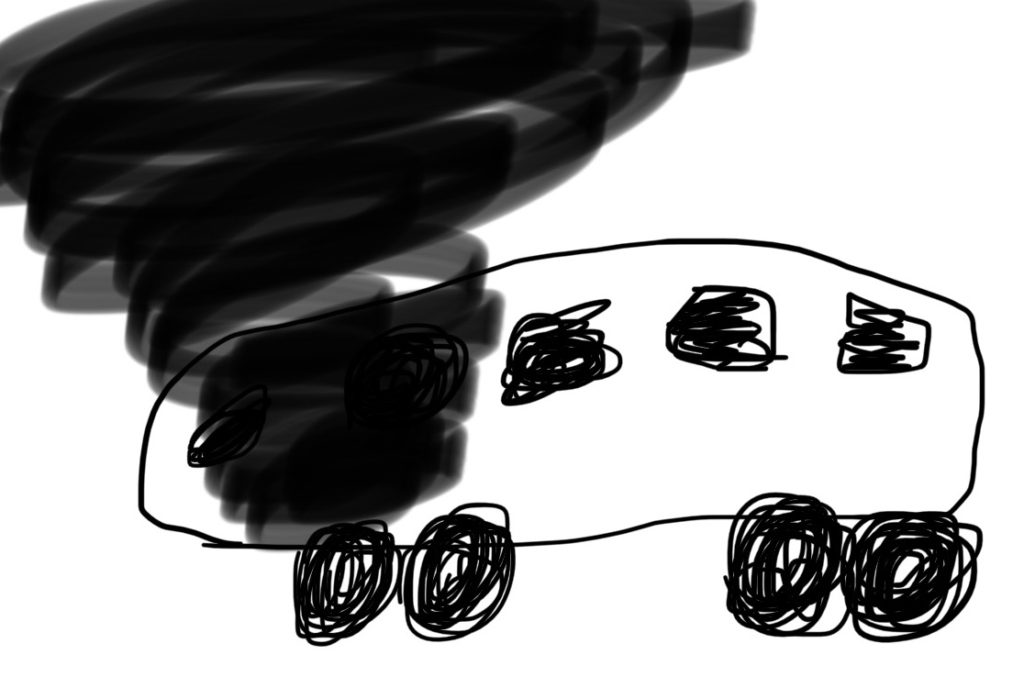
Leaving the Canyon
You leave the Grand Canyon planning to head north and get a hotel room closer to Monument Valley. A friend told you that Monument Valley was gorgeous at sunrise, so you plan to wake up early to see it. Things are flying until about twenty miles outside of Kayenta, where traffic stops halfway up an incline.
You get in line and wait.
You put the car in park and wait.
You turn off the car and wait.
You finally find out that a tour bus had caught on fire, either four miles up the road or at four o’clock. It’s hard to be sure when hundreds of drivers play telephone. Four miles is a long stretch of empty highway, and four o’clock was two hours prior. If the accident still hasn’t been cleared, then it probably won’t wrap up anytime soon. Since GPS can’t reach a signal, you unfold the map to check out your options.
None.
Ok, that’s not true. Even on a lone highway, you always have options:
A. You could turn around and go back the way you came, driving over two hours of road you’ve already covered, and then driving even more because lodges around the Grand Canyon would be expensive and booked.
B. You could drive back over an hour and take a side highway that would take you to a small dot on the map that may or may not have hotels.
C. You could sit in your car for two hours, inching forward at random intervals, and space out.
You choose C and wait another hour, trying to guess what songs are playing through the static of the radio. You try not to go insane since you’re on your fifth day of solo travel, long enough to forget everyone you left behind.
Then it hits you—all of these cars? They’re going to Kayenta, too. They also chose C. You were once sure the city closest to Monument Valley would have plenty of rooms for everyone, but now you don’t have phone service to call any hotels and see.
Traffic finally starts moving at a nice clip. You have your windows down to keep the AC off and prevent the car from overheating, so you can smell the fire before you see it.
It smells light at first, as if all the passengers in a car were smoking like chimneys, and you were driving through their haze. Then it gets stronger. And fouler. And then—there it is. The charred remains of the tour bus. You only know it’s a tour bus because that’s what you hear later. There’s almost nothing left. A semi-circle of ground fifty feet to the right of the highway is also blackened. You hold your breath, partially to keep the smell out of your nostrils, partially to hold back tears as you imagine what happened to the passengers.
Once you’re past the wreckage, you can push the car up to thirty miles per hour, then forty. You’re passing car after car of people waiting to drive by the very spot you just saw.
You stop in Kayenta soon after, and the first hotel you try is booked. The clerk says every hotel—all three—are booked.
“Try Mexican Hat,” she says.
You picture yourself drinking never-ending margaritas with a sombrero on your head, and while it eases your stress, you know she means the city on the other side of Monument Valley.
Newly reconnected with society, you have a phone signal. You start calling hotels, getting a recommendation for cities hours away. You eventually decide to drive into Utah, where you find the only vacancy in a six-hour driving radius. On the way, you only pass a few other cars. There’s no bus, no wreckage, hardly a breeze disturbing in the air. It’s unsettling how calm it is for you, when so many people just experienced a life-altering accident.
You pass through Monument Valley as the sun is setting and the moon is rising.
You get out and take pictures in the fading light. Then you drive on, the moon overhead illuminating the sky as much as your high beams light up the road, leaving it all behind.
